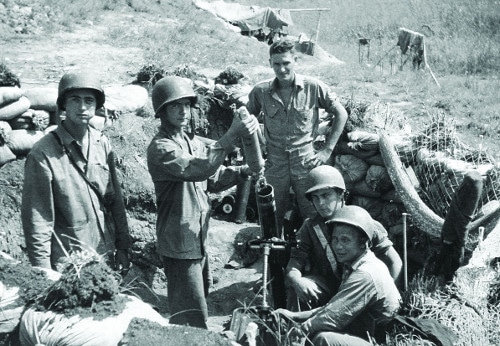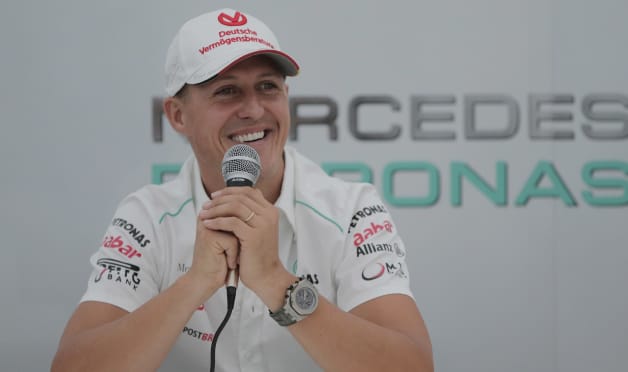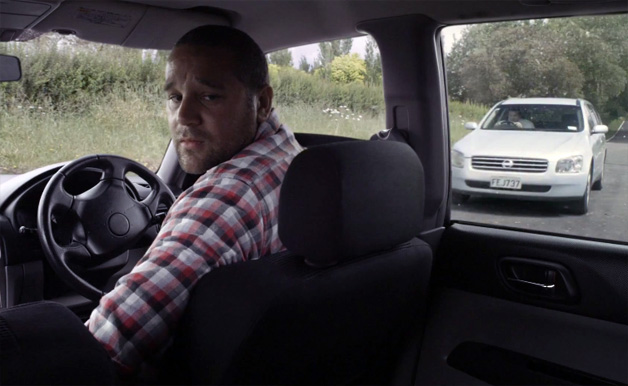
How does a single blog post on UI prototyping become an MVP built in 3 hours, and later a product used by over 50,000 designers, entrepreneurs, product managers, and teachers in more than 80 countries?
Is it enough to create a product and “just launch it” to get that kind of traction? Or do you need to work hard on marketing your product after you launch it?
Are press mentions and blog posts good enough to build sustainable long-term traffic?
How do you price your product to maximize revenue while keeping the price reasonable enough for people to buy?
And How do you get Seth Godin, John Gruber, Steve Blank, SwissMiss, TUAW and Google Ventures to mention your product without asking them to do it?
Keynotopia wasn’t the startup that I had in mind when I moved to Silicon Valley in 2007: I didn’t write a lot of code for it, I didn’t take VC money, I didn’t launch it on TechCrunch, it generated revenue 10 minutes after launch, and I preferred to grow it organically and slowly, and spend most of my time working on the things that I enjoy the most (prototyping ideas, making new products and creating content).
Over the past 3 years, Keynotopia has been my entrepreneurial boot-camp for learning and experimenting with various aspects of creating, launching and marketing products, and I applied the lessons I learned from it to launch two other products: Axutopia and GUIToolkits, and both have been profitable from day one.
In this post, I’ll outline the growth strategies that worked for us, the lessons we learned getting our products into the hands of 50,000+ people, and what we should have done differently given the things we failed at (quite a few).
If you missed my earlier post about how I launched Keynotopia in 3 hours and with less than $50, you should read it here
You’ve Got To Know Basic Marketing Skills!
It’s not enough to create a product, and then hire a “growth hacker” to bring lots of traffic to it.
Before launching a product, you need to learn how to size up your target audience, how to reach them where they hang out, how to understand their needs and frustrations, and find out if they would pay for your product when you create it.
While launching a product, you need to know how to create landing pages that convert, how to clearly state your offerings and benefits, how to find influencers that your customers listen to, and how to create valuable content that constantly brings people to your website.
After launching a product, you need to know how to have better conversations with your customers, how to get further insights into their work and pain points, how to educate them about using your product, and how to identify and scale your most profitable audiences.
Marketing isn’t just about traffic or growth; it’s about understanding people and connecting with them, knowing what their problems are, and how they make their purchase decision.
And if you’re too focused on creating your product to the extent that you’re ignoring the people who would use it, those people will probably ignore your product when you launch it.
Email Is STILL The Best Marketing Channel
I do marketing across several channels: Email, blogging, ads, Facebook, Twitter, LinkedIn, etc… Email marketing outperforms all other channels combined.
People check their inboxes frequently. And if you send them good emails, they will read them and enjoy them. Good emails are short and valuable. They aren’t trying to push your product down your customers’ throats. Instead they are offering advice and assistance to help people decide if your product is right for them.
Good emails sound like that they are coming from another human being, rather than being written by a company or a boring business robot. I write newsletters to my customers the same way I write emails to my friends.
I send plain text email newsletters, with no formatting or pictures, and I get over 40% open rater. That’s about 20,000 people who read every email I send.
Customer Support is Actually Customer Development
A support email is a great opportunity to get feedback and ideas from customers, because you are already having a conversation, and you are providing them value!
I still read support emails and answer them personally. It feels overwhelming at times, but I’ve learned a lot from these emails about how people are using my products and how I can make them better.
After answering a support email, I often ask customers about their current projects and daily challenges. In fact, I currently have this question as my customer support email signature. It helps me get more ideas for new products, and it shows them that I really care about the long-term value they are getting from using our products.
My advice is: don’t outsource customer support in the first couple of years. Do the support yourself. Stay in touch with everyone who has a question or request, and find out what more pain points that your customers have.
And remember this: if you want people to read your emails, you have to read theirs, too!
Create Valuable Freebies and Update Your Product Frequently
The best strategy that worked for us is to launch lots of complimentary updates for paying customers, and several viral freebies to acquire new customers.
We have customers who bought Keynotopia when it first launched three years ago, and they are still getting updates to this day. These product updates over-deliver on their expectations, and they end up recommending our product to their colleagues and friends.
Viral freebies helped us tap into each person’s circle of influence, and to create a network effect around our product (which is usually difficult for non-consumer products).
People email me frequently to advise me to charge for product updates, and I contemplated created a membership site where people pay a monthly fee to get updates. But then I realized that it was okay to provide more value than what I am getting back. That was a transformative moment in my entrepreneurial journey.
Quality Is The Best Marketing Tool
Once you’ve validated your MVP, your highest priority task should be to improve the quality of your product every day. You can try all the marketing tricks you want, but if your product isn’t awesome, your efforts will probably be wasted.
Word of mouth has been the most effective marketing channel for us: people love the product, and they recommend it to friends and colleagues, blog about it, and mention it during a conference talk.
In the beginning, quality meant that we needed to make our UI templates available for all mobile, web, and desktop platforms. When I received a request for a new screen or a missing UI component, we added it for the following update. When a new version of iOS is out, we get the interface guidelines, design the new UI components, and send them to customers as a complimentary update. We’ve released dozens of these updates over the past couple of years.
As we started to cover larger grounds, quality meant taking care of the small detail, even if only a few customers notice it. For instance, many people don’t believe that we took the time to design every single UI component from scratch in Keynote and PowerPoint. To most people, it doesn’t really matter if these are painstakingly designed vector shapes or copied-and-pasted images, and we can probably have a good enough product created from pasted images. But 10% of our audience cares about that, and when they find out they can edit the shapes and colors directly in Keynote or PowerPoint, they love it even more. Those customers often become big fans and loyal evangelists.
Everyone who wrote about us so far: Seth Godin, John Gruber, Steve Blank, Tim Ferriss, Inc magazine, The Unofficial Apple Weblog, SwissMiss, and Google ventures (to mention a few) did so because they liked the product, not because I asked them to write about it. When your product is awesome, people want to tell their fans and readers about it.
Win Customers By Educating Them
I’m a bad salesperson, but a good teacher, and this has worked really well for me so far. Instead of creating long sales copy for our landing pages and newsletters, I created lots of educational content (blog posts, videos, webinars, newsletters,…) on how to design and prototype apps. I am not trying to sell anything in that content; Instead, I am teaching people what they need to know, and I am letting them make the decision to buy on their own.
Keynotopia started as a long blog post that teaches people how to use Keynote to prototype iPad apps. That post has been read over a million times, and our free tutorial videos have been watched by hundreds of thousands of users. When I schedule an online webinar to teach people some new design or prototyping tricks, hundreds of people usually sign up. Most of them haven’t purchased the product yet. Many of them end up purchasing when I am giving them what I know for free.
Teaching your customers what they can do with your products, then letting them decide to buy it on their own, is one of the best sales techniques that I know.
And if you have strong competition, outdo them by educating your customers better.
Your Product Is Your Best Networking Tool
When I first moved to the valley, I went to lots of conferences and events to network and connect with others. The problem is that all this networking time was preventing me from spending my time where it mattered the most: designing and building products.
Things have changed significantly after having a product out on the market that tens of thousands of people are using: People are sending me invitations to connect and meet, to speak at conferences and events, and to launch joint ventures together. When I attend an event, I often meet people who already know me because they are using one of my products.
And I often get replies for cold emails I send to people that I want to connect with, because they are using Keynotopia or have heard of it from a friend or coworker.
I probably wouldn’t have been able to connect with any of those awesome people had it not been for my work.
First time entrepreneurs believe they should network and connect with others first, in order to create their products. I used to believe the same. What I found is that creating a great product that lots of people use is a better way to connect with great people.
Get down to work and create an awesome product, and it will be your best networking tool to connect with others.
Get the price right
The right price is different for every product and for every audience, but there is a tipping point where the price/value perception converges to bring you the highest revenue. To reach that point, you need to talk to customers and do some price testing.
Keynotopia started with two iOS templates that sold for $9. It now includes 9 different templates and 3 bundles with over 3,000 UI component and 200+ icons, that are priced at $49, $97 and $149.
At $9, keynotopia was an impulse buy for some freelancers and hobbyists. At $49, $97, or $149, it is a professional package that helps people become more productive with their work. And I had to justify that price!
I knew I needed to charge more when customers told me that I was undercharging for the product, given the productivity boost and the time saved when using it. Most of them said they were willing to pay $100 for it. When I asked them why they would pay that much, they said that the templates already saved them a few hours with their paid clients, and they used that time to bill more hours to other clients. I realized that if I save professional designers ten hours each, those tens hours are worth $1,000 on average, and I should charge a percentage of that.
I tested the $97 price point against previous prices ($79, $69 and $49), and it got the most clicks and generated the highest revenue. What is ironic is that more people buying at $97 than at $79, which meant that I was probably getting the price/value perception right at $97.
I never changed it since.
If you can quantify the value your product is providing to your audience, don’t be afraid to charge a percentage of that value.
Start Now and Learn As You Go
The biggest lesson of all has been my personal shift from learning everything I can before starting, to starting then learning what I need to at each step to get to solve my current challenges and move to the next. I spent a lot of time on forums asking questions and soliciting advice, I emailed people I knew (and I didn’t know) and gave them specific problems that I was facing, and I read specific chapters of certain books.
This was the biggest lesson because my time was mostly put towards acting, rather than preparing myself to act. There were many mistakes along the way, none of which was a disaster, but I don’t think preparing myself before starting would have made me avoid them. I wouldn’t have wanted to anyway.
You don’t need an MBA to become an entrepreneur. You need a few customers with a common pain point, or an idea that you are willing to pursue, and the willingness to start before knowing how to get to the end, to keep going until the end, and to make your mistakes while moving forward.
People think that entrepreneurs know what they are doing. They don’t. They just learned how to figure things out as they go, and trust that things will work out at the end.









